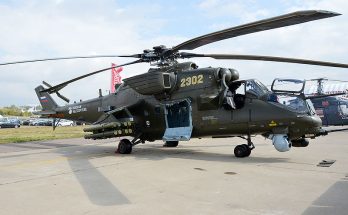by Nicholas Dawson, Forecast International.

Image by Dr StClaire from Pixabay
As of this writing, the world is going through a major energy crisis. From the United States to Europe, the Middle East, and China, energy prices have risen as the world recovers from the COVID-19 pandemic. Major suppliers of oil and natural gas, such as the Organization of the Petroleum Exporting Countries (OPEC), are experiencing international pressure to allow more energy exports to help alleviate the pains of increasing prices.
Europe has been hit severely; it has started to rely more on green energy while phasing out fossil fuels, but in doing so, it has raised the demand for natural gas and liquid natural gas (LNG). Meanwhile, there has been a loss of power in 20 of China’s 31 provinces due to the rising price of coal. While China has been moving toward renewable energy, it is still the world’s largest importer of coal. In America, crude inventories unexpectedly dropped by 400,000 barrels for the week of October 15, and gas prices have been rising across all states. Due to this, the United States and several European countries asked OPEC and Russia to increase their output. In America, the Biden administration has toyed with the idea of using some of its reserves, but nothing has occurred yet. Instead, the administration asked OPEC to increase its barrels per day (BPD) to ease prices. Following a meeting regarding the matter, OPEC decided to stick to the original deal, which would add 400,000 BPD to its output for November. This analysis will focus mostly on OPEC and the energy crisis as a whole and examine several situations in the Middle East, Africa, and Eurasia.
OPEC is an important cartel that includes Algeria, Angola, Congo (Republic of), Equatorial Guinea, Gabon, Iran, Iraq, Kuwait, Libya, Nigeria, Saudi Arabia, the United Arab Emirates (UAE), and Venezuela. Together, the group controls over 50 percent of global oil supplies and about 90 percent of proven oil reserves. During the COVID-19 pandemic, the OPEC nations were hit hard by low demand for oil. The nations had a slow recovery throughout 2021, mostly due to the rise of the delta variant. It remains consistent that one of OPEC’s main reasons for not increasing its BPD is the fear of a fourth COVID-19 resurgence.
Additionally, many countries belonging to OPEC are contending with internal problems. Oman, which is a part of OPEC+, is still recuperating from hurricane Shaheen. Oman is a major exporter of crude oil and gas, specifically for Asian countries such as China and Japan. Nigeria and Angola haven’t been able to meet their production quota levels due to underinvestment and maintenance issues, leaving Saudi Arabia and the UAE as the main suppliers of oil thanks to their large spare capacity. With these factors, the price of oil has reached over $84 a barrel as of October 20. Saudi Arabia’s Energy Minister Prince Abdulaziz bin Salman stated that the availability of crude oil is not the problem, but rather who would burn it.
OPEC and its allies, led by Saudi Arabia and Russia (to form OPEC+), are worried about excess capacities that occurred during the COVID pandemic. But even if they are increasing production, they are afraid of swinging prices and argue that OPEC must act as a regulator of gas, oil, coal, and LNG. Previous members of OPEC provide some competition, specifically Qatar, which has become one of the most important LNG providers in the world. China and India have been major importers of Qatari LNG. Right now, LNG export competition is focused mainly between Qatar and Australia, with the International Energy Agency (IEA) forecasting that the United States will be a major competitor by 2023 and top exporter by 2025.
This matters, as the energy price crisis now is seemingly a result of a hasty transition to alternative energy markets when major countries still have a heavy reliance on fossil fuels, as seen in Europe. The IEA is predicting higher energy prices going into 2022 as a result of a shortage of LNG, natural gas, and coal. The report also projects that there will be a slow recovery going forward due to the current economic conditions. As energy prices rise and the world begins to invest more into alternative energy, there will be more demand for fossil fuels, natural gas, and LNG. The transition will take time.
There is a fear that now the markets are in a dangerous situation. Countries are looking for ways to repair rising energy prices, but non-state international actors could target the production of major energy companies in the Middle East, Africa, and Eurasia, which could severely hamper world markets. These non-state actors would most likely be terrorist organizations and rebel groups, which are plentiful in those regions. The Houthis in Yemen; ISIS in Iraq, Syria, and Afghanistan; and Al-Shabaab and Boko Haram in Africa are all well known for the threats they pose in their respective regions. With the prediction of a slow recovery of the energy market and worldwide economies, there is sufficient worry that an international incident targeting one of the major energy producers could make everything worse. This gives countries in the region a strong incentive to increase their military budgets. Some countries, such as Qatar, Russia, Saudi Arabia, and the UAE, are looking to increase defense spending as per their own forecasts within their 2021 budgets.
With most of the OPEC countries increasing their defense budget in 2021, there is a decent chance that in 2022 there will be more increases in defense budgets than decreases as the Middle East and Africa invest more in their domestic military markets while also funding counterterrorism efforts in their effective region. Due to the Taliban retaking Afghanistan in August this year, Tajikistan, Kazakhstan, and Uzbekistan all participated in military exercises with Russia in September and October. Their main worry is that Afghanistan will become a cesspool of growing terrorist movements with the Taliban in charge. American foreign analysts also fear that this could happen, as the Foreign Policy Research Institute points out. However, the Taliban insists it will not allow that to happen and has been taking strides to combat ISIS-K.
Examining the Afghanistan situation for a moment, countries in the region have large stock in their oil exports, so it would be in their best interest to protect those assets from potential attacks from ISIS, which has a splinter cell in northwest Afghanistan known as ISIS-K. Their exports go mostly to China and Europe. Any disruption in their supply lines would severely hurt not only the domestic government financially, but also multiple European countries and China. Azerbaijan, another member of OPEC+, is predicted to increase its military budget (mostly due to its rivalry with Armenia and growing tensions with Iran) but also has a large share in exporting crude oil and gas to Europe.
Meanwhile, in the Middle East, Lebanon has been struggling to maintain energy levels, leading to a crisis similar to China’s situation. Iran has begun to ship oil to Hezbollah, one of the main parties in Lebanon, provoking ire in the international community. Multiple countries, including the U.S. and a wide berth of European countries, identify Hezbollah as a terrorist organization. Now that Hezbollah has been providing oil to Lebanon, fears have been raised that this will create tension between Lebanon and foreign countries that want to help it get out of what is considered the worst economic crisis in modern history. This leads to another potential avenue for terrorist organizations, something ISIS utilized in its prime: using energy exports through captured territories to fund their efforts and hamper the market through the black market and extortion. If a terrorist organization manages to do this in high activity areas such as Western and Eastern Africa, it could lead other countries to take advantage of the cheaper oil prices, which would directly fund the terrorist groups’ efforts, making it even harder to get rid of their influence.
We are in a volatile time. The world is slowly recovering from the COVID-19 pandemic, and rising energy prices are causing many countries to panic. The situation could become far worse, as winter is looming and there will be an even higher demand for energy. We are in a time of transition where countries are moving to renewable and green energy. The current situation looks to be growing pains, as the hurry to improve our technologies has left us realizing how much we still rely on fossil fuels. The post-COVID economy only exacerbates this problem, leading to hesitancy among the main oil, gas, coal, and LNG exporters, such as OPEC and OPEC+, to release and produce more goods. As this crisis continues, we’ve seen multiple countries increase their defense budgets to protect their interests and expand their defense industries. But most importantly, these conditions have led to a terrible possibility of non-state actors seizing control of or destroying vital supply lines for their gains. It will be a global effort to get through this crisis and prevent such a prospective threat. If worse comes to worst, it will certainly be a cold winter.
For 50 years, Forecast International intelligence reports have been the aerospace and defense industry standard for accurate research, analysis, and projections. Our experienced analysts compile, evaluate, and present accurate data for decision makers. FI's market research reports offer concise analysis of individual programs and identify market opportunities. Each report includes a program overview, detailed statistics, recent developments and a competitive analysis, culminating in production forecasts spanning 10 or 15 years. Let our market intelligence reports be a key part of reducing uncertainties and mastering your specific market and its growth potential. Find out more at www.forecastinternational.com




